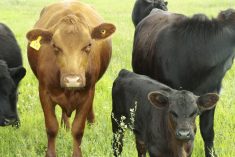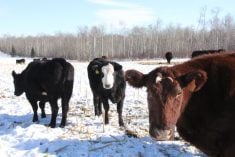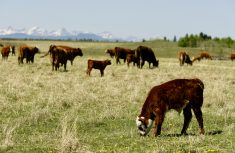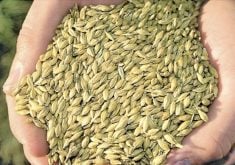Looking back at the spring/summer of 2016, the year was fairly typical in that there was a great deal of variation in growing conditions across the country. Much of Western Canada was blessed with significant moisture that resulted in great growing conditions for pasture, hay and silage crops. However, ill-timed rains forced many producers to put up hay at less than ideal quality. In contrast, parts of Ontario experienced drought-like conditions for much of the growing season, which resulted in a poor hay crop for many producers, particularly for those that rely on the second cut to get through the winter. The result of this variability in the 2016 forage crop is that many producers are faced with making decisions about supplementing their traditional winter feeding programs. With this article I would like to provide direction on choosing the right supplement.
Read Also

Body condition, nutrition and vaccination for brood cows
One of the remarkable events of the past century related to ranching has been the genetic evolution of brood cows….
Depending on your situation, supplementation needs will likely fall into one of three categories. These include: providing a supplemental source of energy, protein or in some cases a combination of energy and protein. For example, when forage supplies are tight, you are likely going to have to provide a supplemental source of energy to get your cattle through the winter. Those that have a sufficient supply of poor-quality hay may need to supplement protein or in some cases both energy and protein. The first step in making the correct choice will be to have your forage tested. A forage test will give you the quality of the material you are starting with and point to the need for supplemental energy, protein or both.
The following examples illustrate common sources of energy and/or protein that can be used to supplement winter feeding programs (all values DM basis). Traditional energy supplements include the cereal grains such as corn, barley, and oat and, in some cases, wheat. If we use corn grain as the standard, typically it will contain 88 per cent total digestible nutrients (TDN). Wheat will be similar to corn in terms of energy content; however, barley and oat are lower in energy at 82 and 76 per cent TDN, respectively. To put these values into perspective, a good-quality alfalfa/grass hay will test at 65 per cent TDN while a medium-quality grass hay will average 55 per cent TDN and barley or wheat straw will come in at 40 to 45 per cent TDN. It is also important to remember that cereal grains are starch-based sources of energy and that cattle need to be adapted to being fed high-grain diets, as may be the case if you are considering feeding significant amounts of straw this winter. As well, in order to obtain optimum feed value, barley and wheat kernels will need to be coarsely processed (i.e. dry rolled) before feeding. Oat grain can be fed whole as a creep feed to younger cattle, but is not as efficiently digested when consumed by mature cattle. While not ideal, corn grain can be fed whole to mature cattle without significant nutrient loss. Finally, keep in the back of your mind that these cereal grains are also relatively good sources of crude protein ranging from eight to 10 per cent for corn to 15 per cent for wheat grain.
There are also a number of byproducts that can be fed to provide supplemental energy. Examples include wheat midds, grain screenings, dried distillers dried grains with solubles (DDGS) and other specialty byproducts that may be available locally (i.e. cull potatoes).
Wheat midds or mill-run is a byproduct of the flour industry. While there is some variability depending on source, this product is typically 90 to 95 per cent of the energy value of barley grain. Wheat midds are also a very good source of protein (i.e. 15 to 18 per cent). A wide variety of grain screening products can be purchased. Typical grain screening pellets range in TDN from 65 to 72 per cent with crude protein levels from 13 to 15 per cent. Pea and lentil screenings are superior sources of both energy and protein relative to cereal grain screenings. Fortified grain screening pellets are sold by a number of feed mills and specialty plants across the country. These pellets are custom blended to provide targeted levels of energy and protein and can also contain a mineral package. One should consult your feed supplier for actual nutrient specifications.
Finally, corn and wheat DDGS are unique products in that they are concentrated sources of both energy and protein. Wheat DDGS typically are 38 to 40 per cent CP and are similar in energy content to barley grain. Corn DDGS are lower in protein (28 to 33 per cent) than wheat DDGS but closer to corn grain in energy value (85 to 90 per cent TDN). Both are a highly palatable feed that cattle readily consume. If a protein supplement is required, a wide variety of choices are available including canola meal (38 to 40 per cent CP), soybean meal (46 to 52 per cent CP depending on type) and a variety of commercial supplements.
There are numerous options available with prices varying by commodity, supply, location and time of year. Working with a qualified nutritionist can help you make the right decision for your situation. However, as stated above, the first step is to get your forage tested. The results will point you in the right direction when formulating your winter feeding program.

















